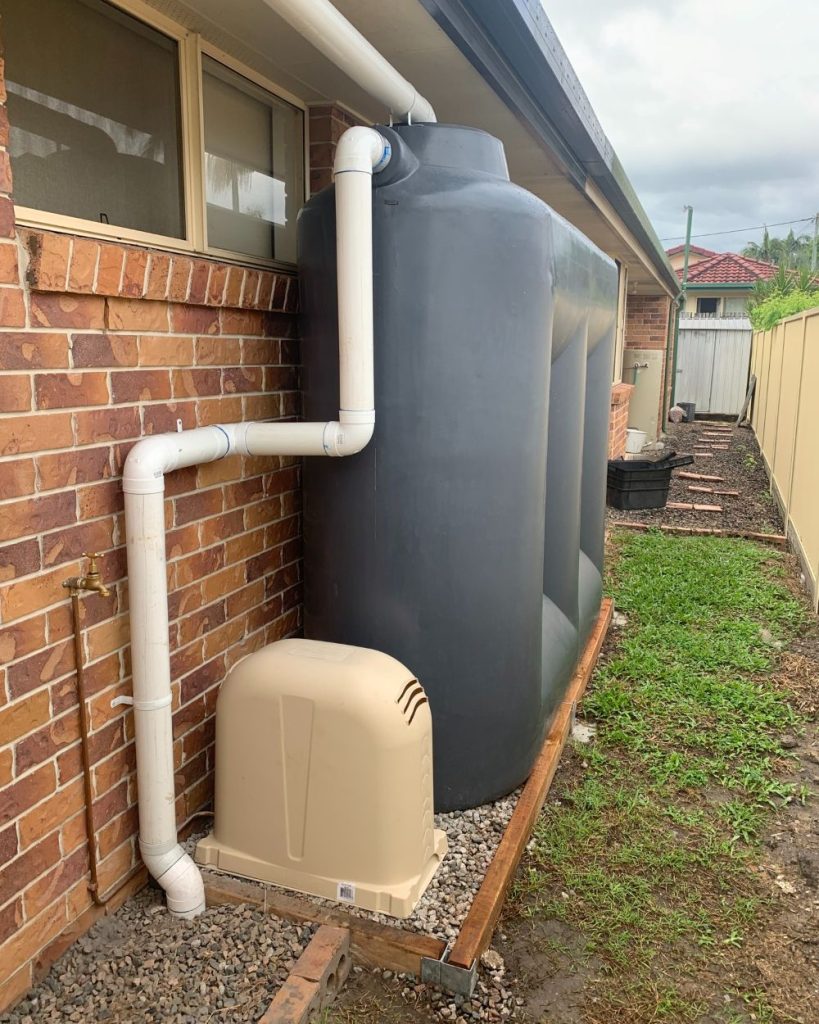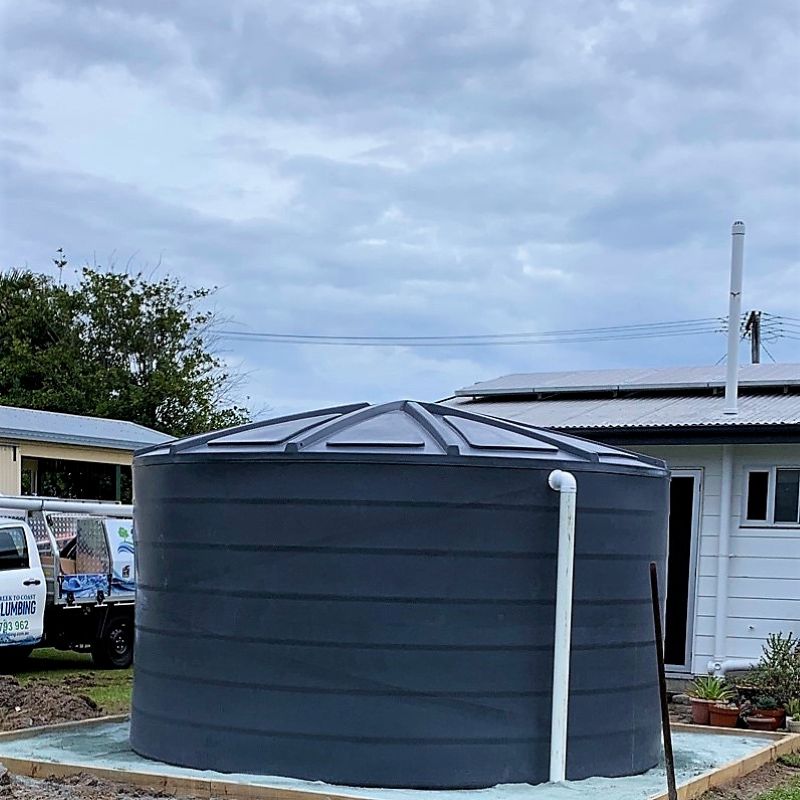Selecting the Ideal Rainwater Harvesting System to Suit Your Lifestyle and Conserve Water Resources
Throughout Queensland, an increasing number of homeowners are adopting rainwater tanks as an effective strategy to reduce utility expenses, alleviate pressure on local water systems, and cultivate drought-resilient properties. Before making the investment in a rainwater tank, an essential question must be addressed: How much water do you actually require?
At Creek to Coast Plumbing, we support homeowners in designing effective rainwater harvesting systems, and determining the appropriate tank size is a pivotal first step in this process.

Maximise the Effectiveness of Your Rainwater Collection System
Evaluating your rainwater collection potential is the crucial first step towards effective water management. This potential is determined by two key factors: your roof area and the average annual rainfall in your locality. Understanding these elements is vital for the strategic planning of your rainwater system.
Consider the following specifics:
- Generally, for every square metre of roof area, approximately 1 litre of water is collected for every 1mm of rainfall.
- If your roof spans 200m² and your area receives 1,200mm of rainfall annually, you could potentially gather 240,000 litres each year.
However, it’s crucial to recognise that this represents an ideal scenario. In practice, various factors such as first flush systems, evaporation, the inclination of your roof, gutter design, and overflow can lead to water loss.
We typically recommend planning for a collection efficiency of 80–90% to accommodate these variations.
What Are Your Intended Uses for the Collected Rainwater?
At this stage, practical considerations become extremely important. Are you collecting rainwater exclusively for garden irrigation purposes, or do you plan to utilise it for toilets, laundry, or even your entire household?
Here are some significant factors to contemplate:
Determining the Optimal Tank Size for Garden Irrigation Requirements
If your primary goal is to irrigate lawns, vegetable patches, or decorative plants, a small to mid-sized tank (2,000–5,000 litres) will likely suffice.
However, this largely hinges on the dimensions of your garden and the local rainfall patterns.
In areas where brief, intense rain showers are common, larger tanks may be necessary to capture as much rainwater as possible during these precipitation events.
Utilising Rainwater for Laundry and Toilet Facilities
Residences that incorporate rainwater for toilets and washing machines often find that 5,000–10,000 litre tanks provide considerable advantages. These appliances typically account for approximately 35–40% of internal water usage, resulting in substantial savings over time.
It is essential to install a pump and suitable plumbing to connect these systems to your household, a service that Creek to Coast expertly manages as part of our installation process.

Considerations for Supplying Rainwater to Your Entire Household
If your aim is to achieve complete self-sufficiency or to supply rainwater to every tap within your home, you will likely require 20,000 litres or more, depending on the size of your household. Larger tanks can also serve as backup water supplies for fire emergencies, during dry spells, or when hosting guests.
How Many Residents Are There in Your Home?
A useful guideline suggests providing around 150–250 litres per person per day when using rainwater for general household purposes.
- For a couple: a 5,000–10,000 litre tank is generally adequate.
- For families of four or more: consider 10,000–20,000 litres or larger to ensure a sufficient supply.
The number of occupants in your household will directly impact how quickly your tank depletes, particularly during dry spells when water conservation becomes paramount.
Is Your Roof Area Sufficient for Effective Rainwater Harvesting?
The size of your roof plays a fundamental role in determining how much rainwater you can successfully gather.
A larger roof area allows for a greater capacity to harvest water.
Additionally, the configuration of your roof is significant. If your home features multiple roof segments that can direct water into a single tank, we can design an efficient downpipe system to optimise water collection from all accessible surfaces.
For smaller homes or townhouses, slimline or under-deck tanks may be the most suitable choice, and Creek to Coast can assist in identifying the ideal solution for your requirements.

Essential Elements: Proper Placement, Guttering, and Overflow Management
Effective rainwater harvesting entails much more than just the tank.
A well-crafted system requires:
- Robust, well-maintained gutters to prevent blockages
- Leaf guards and first flush diverters to guarantee water quality
- Overflow systems that safely redirect excess water away from your home’s foundations
- A stable, level tank pad or stand to support the structure
Creek to Coast Plumbing provides comprehensive rainwater system installations, which include gutter enhancements, pump connections, stormwater management, and filtration systems to ensure that your tank is secure and ready for future use from day one.
How Can You Guarantee Cleaner and Safer Rainwater for Your Household?
We strongly recommend the installation of a whole-house rainwater filtration system, especially if you intend to use your harvested rainwater for purposes beyond just garden irrigation.
The Puretec Hybrid Plus systems, expertly installed by our team, can efficiently eliminate sediments, unpleasant odours, tannins, bacteria, and also adjust the water’s pH to reduce copper leaching and pipe corrosion. Discover the myriad benefits of water filtration for your collected rainwater.
Making Informed and Smart Choices for Your Rainwater Tank Selection
Selecting a rainwater tank involves more than merely opting for the largest option available; it’s about aligning your system with your roof size, the rainfall patterns in your area, and your specific water usage requirements.
At Creek to Coast Plumbing, we have been assisting Queensland homeowners in establishing sustainable rainwater systems for over 30 years. From identifying the optimal tank size and placement to complete guttering and filtration solutions, we are committed to ensuring that you maximise every drop of valuable rainwater.
The Article: Choosing the Right Size Rainwater Tank for Your Queensland Home first appeared on https://writebuff.com
The Article Choosing the Right Size Rainwater Tank for Queensland Homes Was Found On https://limitsofstrategy.com
